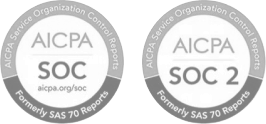Pay Benchmarking
Article Navigation
Definition: Pay benchmarking is the process of comparing a company’s compensation for specific roles with what similar companies are offering for the same roles in the external job market. This ensures that pay levels are competitive, fair, and aligned with industry standards.
Purpose: By assessing how pay stacks up against the market, companies can attract and retain talent, maintain internal equity, and make informed compensation decisions.
Best Practices:
- Define job roles clearly with accurate descriptions
- Match roles with comparable positions in external datasets
- Use multiple reputable data sources (surveys, reports, databases)
- Set salary bands that reflect market conditions and internal strategy
- Reassess benchmarks regularly to adjust for market changes
Payscale Benchmark
Definition: A payscale benchmark refers to the established salary range for a particular role based on industry data and labor market trends. These benchmarks help organizations identify if they are underpaying or overpaying employees compared to peers.
What Affects Payscale Benchmarks:
- Geographic location and cost of living
- Industry sector and organizational size
- Level of responsibility and required experience
- Job function and required qualifications
Use Cases:
- Setting offers for new hires
- Reviewing compensation packages during performance evaluations
- Ensuring compliance with fair pay practices
Industry Salary Benchmarks
Definition: These are standardized compensation data points collected across companies within the same industry. They help HR teams understand the compensation landscape for particular roles and skill sets.
Sources Include:
- Industry-specific compensation surveys
- Government labor statistics
- Consultant or analyst reports
- Third-party platforms with verified employer-reported data
Why It Matters: Salary benchmarks provide a reality check on what’s competitive in a particular market, supporting better workforce planning and pay transparency.
Merit Increase
Definition: A merit increase is a permanent salary raise awarded based on an employee’s individual performance rather than tenure or market adjustments.
Merit Raise vs. Cost of Living Adjustment: While a cost of living adjustment accounts for inflation, a merit raise rewards achievement and contribution.
Merit-Based Pay Strategy Includes
- Setting clear performance metrics
- Tying pay progression to performance review cycles
- Communicating expectations and results transparently
Performance Reviews and Merit Increases
Relationship: Merit increases often follow performance evaluations, where employees are assessed against set goals or competencies. A strong review can lead to a corresponding pay raise.
Benefits:
- Reinforces accountability and high standards
- Aligns compensation with outcomes
- Boosts motivation and engagement when managed fairly
Caution: Biases in reviews can lead to inequitable merit increases. Organizations should implement structured, bias-reducing review processes.
Non-Discrimination Testing (NDT)
Definition: NDT is a set of IRS-mandated tests that ensure benefit plans like 401(k)s and FSAs do not favor highly compensated employees (HCEs) over non-highly compensated employees (NHCEs).
401(k) Non-Discrimination Testing
Tests Include:
- ADP Test (Actual Deferral Percentage): Compares elective deferral rates between HCEs and NHCEs
- ACP Test (Actual Contribution Percentage): Includes employer match and after-tax contributions
- Top-Heavy Test: Checks if key employees hold more than 60% of plan assets
Corrective Actions: Plans that fail must be corrected, often within 2.5 months of the plan year’s end.
FSA Non-Discrimination Testing
- What It Covers: Flexible Spending Accounts must pass eligibility, benefits, and concentration tests to ensure equitable access and prevent undue tax advantages for HCEs.
- Employer Responsibility: Regular testing ensures compliance and avoids disqualifying tax penalties.
Occupational Stress
Definition: Occupational stress refers to physical and emotional strain resulting from work demands, poor work conditions, or lack of control over job roles.
Sources Include:
- High workloads
- Unclear expectations
- Toxic workplace cultures
- Lack of support or recognition
Occupational Stress Injury
Examples:
- Burnout and fatigue
- Anxiety or depression linked to job pressures
- Repetitive strain injuries from overwork or poor ergonomics
Impact: These injuries can result in lower productivity, absenteeism, and increased turnover if left unmanaged.
Occupational Stress Management
Strategies Include:
- Promoting work-life balance and flexible scheduling
- Providing mental health resources and counseling
- Encouraging open communication and supportive leadership
- Training managers in stress recognition and intervention
Organizational Benefits: Effective stress management boosts morale, engagement, and long-term workforce sustainability.
Summary
From pay benchmarking and salary alignment to performance-linked raises, compliance testing, and mental wellness, these glossary entries highlight core pillars of modern HR strategy. When understood and applied holistically, they empower organizations to build fair, compliant, and resilient workplaces that prioritize both productivity and people.































 Back
Back